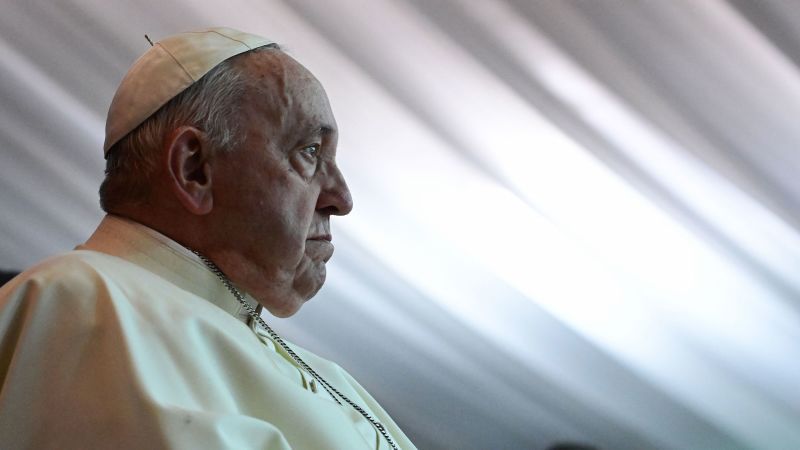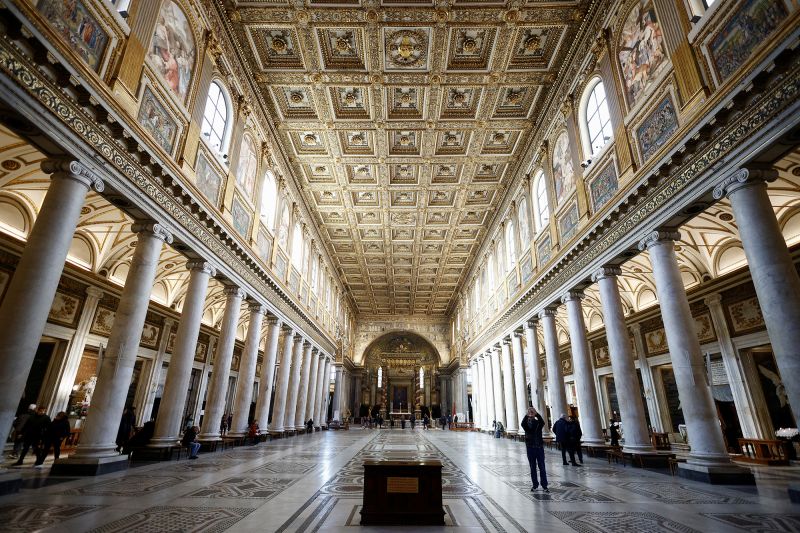Pope Francis, who passed away on Easter Monday, has decided to depart from tradition by selecting a different location for his burial - opting for a bright basilica instead of the Vatican grottoes.

Normally, popes are interred within Vatican City, beneath St. Peter's Basilica. However, Francis will be the first pontiff in over a century to be buried outside the Vatican, as he requested a modest tomb a couple of miles away in the Basilica di Santa Maria Maggiore, also known as St. Mary Major.

Francis' funeral will be held on Saturday in St. Peter's Square, followed by his burial in the basilica, located on the other side of the river in central Rome.

In his will, the pontiff stated, "The tomb must be in the earth; simple, without particular decoration and with the only inscription: Franciscus." He also mentioned that the costs of his burial would be covered by a benefactor.

Related article How Pope Francis' progressive legacy changed the church
While Francis' resting place will be unassuming, the basilica itself shines with sunlight and gold. The ceiling is adorned with gilded wood, and light streams in through high windows to illuminate intricate mosaics that adorn the nave.
Santa Maria Maggiore, situated on one of the seven hills of ancient Rome, is one of four papal basilicas. Its bell tower stands as the tallest in Rome, reaching a height of 246 feet, making it the city's highest point.
Legend has it that the Virgin Mary appeared to Pope Liberius and a Roman aristocrat, requesting the construction of a church in her honor at a location that would be miraculously revealed. The Esquiline Hill in Rome was identified as the spot after snow fell on its summit in August of 358, during the height of summer.
The church, as it stands today, was commissioned by Pope Sixtus III in 431. The mosaics date back to that time, and the interior boasts Classical columns repurposed from other structures, all enclosed in a Neoclassical facade from the 1700s.
For Pope Francis, Santa Maria Maggiore held a special place in his heart. He would often visit the basilica before and after his travels, as well as following hospital stays, to pray to the Salus Populi Romani, an important Marian icon.
Francis expressed his desire to be buried in the basilica in December 2023, citing a strong connection with the site. He mentioned that preparations for his burial have already been made, emphasizing his intention to streamline papal funerals.
Although several other popes are buried in Santa Maria Maggiore, Francis will be the first pope since Leo XIII in 1903 not to be interred in St. Peter's Basilica. His decision to break tradition extends to his living arrangements as well, as he chose to reside in a modest apartment in the Vatican guesthouse, Santa Marta, instead of the Apostolic Palace.
Following his passing, Basilica di Santa Maria Maggiore saw an influx of visitors, with many expressing emotional sentiments and admiration for the artworks and sculptures within the church.
As the Catholic faithful mourn Pope Francis's passing, many hope that his successor will continue his legacy of love, empathy, and hope for the Church.
CNN's Lauren Said-Moorhouse contributed to this story.